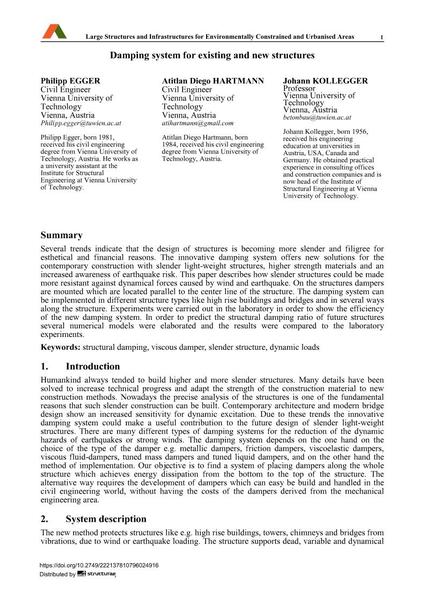Damping system for existing and new structures

|
|
|||||||||||
Bibliografische Angaben
| Autor(en): |
Philipp Egger
Atitlan Diego Hartmann Johann Kollegger |
||||
|---|---|---|---|---|---|
| Medium: | Tagungsbeitrag | ||||
| Sprache(n): | Englisch | ||||
| Tagung: | IABSE Symposium: Large Structures and Infrastructures for Environmentally Constrained and Urbanised Areas, Venice, Italy, 22-24 September 2010 | ||||
| Veröffentlicht in: | IABSE Symposium Venice 2010 | ||||
|
|||||
| Seite(n): | 362-363 | ||||
| Anzahl der Seiten (im PDF): | 6 | ||||
| Jahr: | 2010 | ||||
| DOI: | 10.2749/222137810796024916 | ||||
| Abstrakt: |
Several trends indicate that the design of structures is becoming more slender and filigree for esthetical and financial reasons. The innovative damping system offers new solutions for the contemporary construction with slender light-weight structures, higher strength materials and an increased awareness of earthquake risk. This paper describes how slender structures could be made more resistant against dynamical forces caused by wind and earthquake. On the structures dampers are mounted which are located parallel to the center line of the structure. The damping system can be implemented in different structure types like high rise buildings and bridges and in several ways along the structure. Experiments were carried out in the laboratory in order to show the efficiency of the new damping system. In order to predict the structural damping ratio of future structures several numerical models were elaborated and the results were compared to the laboratory experiments. |
||||
| Stichwörter: |
dynamische Lasten
|
||||
